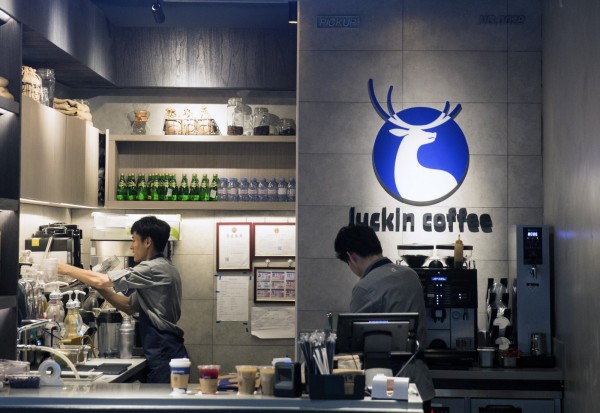Is the civet coffee good? East Timor Kopi Luwak flavor characteristics introduction Kopi Luwak

Professional coffee knowledge exchange more coffee bean information please follow the coffee workshop (Wechat official account cafe_style)
Coffee was first introduced to Indonesia from Batavia in what is now Jakarta in 1696 during the Dutch colonial period, when the Netherlands introduced Arabica coffee, which was cultivated on the way from Cibodas National Park to Puncak Peak. This has become one of the top products in the Netherlands. The East India Company VOC first exported Indonesian coffee in 1711, and over the next 10 years, exports grew to 60 tons a year.
In Indonesia, coffee is not only a way of life, but also an important commodity in the country. Indonesia is one of the largest coffee producers in the world, along with Brazil, Vietnam and Colombia. It is not only drunk by Indonesians, but also a source of livelihood for many people. From coffee farmers to coffee traders is an important part of many people's daily lives.
Indonesia produces some of the world's best coffee beans, including "the world's most expensive coffee": Kopi Luwak.
Indonesia is also the producer of the world's most expensive coffee, known as Kopi Luwak. The historical origin of Kopi Luwak is as interesting as its taste. The authentic Kopi Luwak collects the droppings of wild raccoons (common raccoons, coconut raccoons), which are nocturnal in coffee plantations, foraging for well-ripe coffee beans. But it can't digest stones, coffee shops and cherries, so these cherry stones and coffee beans pass through the intestines and stomachs of these raccoons. Coffee farmers then collect and wash the coffee beans. The process of fermenting coffee beans in the raccoon's stomach breaks the coffee protein and takes away the bitterness, making the Kopi Luwak silkier, pristine and chewy. The low acidity of Kopi Luwak can also be easily absorbed by stomach ulcers and people with digestive problems.
Indonesia's Kopi Luwak civet coffee (Indonesian: Kopi coffee / Luwak civet), the United States called Civet coffee or cat poo coffee Kopi Luwak.
The civet eats the cherry fruit of the coffee on the tree, and the coffee excreted after passing through the digestive tract is called civet coffee. Asian Palm Civet Asian coconut cats, commonly known as "civets", are arboreal wild animals known as Paradoxurus hermaphroditus. Many different species of civets can be found in the tropics, but most of the special civets are concentrated in Southeast Asia. Civet coffee is more common in Sumatra of Sumatra, Jawa of Java and Sulawesi of Sulawesi in Indonesia archipelago. The Philippines is called Motit Coffee and Kape Alamid according to different regions. East Timor is locally known as Kafe-Laku. Vietnam is called Weasel Coffee (Weasel: weasel).
Civets are naturally nocturnal animals, and they often go to coffee gardens to eat coffee cherries, so it also affects the harvest of coffee. Not every farmer knows the value of civet coffee, so it is often hunted in many places. Civets are easy to get close to people, and they can often be seen climbing on the roof of their homes in Bali. Most wild civets live in trees and use their keen sense of smell to find ripe tropical fruits and favorite foods. they are omnivorous animals, mainly mature fruits and seeds, and also eat insects and snakes. therefore, the feces emitted from the real wild civets coffee will be mixed with all kinds of substances. Civets naturally choose the most ripe and sweetest fruits, so they eat ripe red coffee cherries, including coffee pulp and beans. Coffee cherries are not digested in the stomach, and the enzymes in the civet's digestive tract combine with coffee beans, destroying the protein, thus reducing the bitterness of the coffee. The coffee beans are indigestible, so they are excreted. The beans are still covered with sheepskin. After washing, drying and baking, they become civet coffee.
END
Important Notice :
前街咖啡 FrontStreet Coffee has moved to new addredd:
FrontStreet Coffee Address: 315,Donghua East Road,GuangZhou
Tel:020 38364473
- Prev

Luckin Coffee entered the Greater Middle East and India market, challenging Starbucks, the strongest rival.
Professional coffee knowledge exchange more coffee bean information please follow Coffee Workshop (Wechat official account cafe_style) Luckin Coffee (Luckin Coffee), who wants to beat Starbucks in China, is planning to enter other overseas markets
- Next

Luckin Coffee has increased his registered capital by US $300m, added clothing retail, or launched peripheral products.
Professional coffee knowledge exchange more coffee bean information please follow the coffee workshop (Wechat official account cafe_style) news on July 25, Tianyan check data show that the registered capital and business scope of Luckin Coffee (China) Co., Ltd. have changed. Of this total, registered capital increased by US $300 million, from US $750 million to US $1.05 billion. In addition, in this change, Ruixinga
Related
- What brand of black coffee is the most authentic and delicious? what are the characteristics of the flavor of the authentic Rose Summer Black Coffee?
- Introduction to the principle and characteristics of the correct use of mocha pot A detailed course of mocha pot brewing coffee is described in five steps.
- Which is better, decaf or regular coffee? how is decaf made?
- How much is a bag of four cat coffee?
- How about four Cat Coffee or Nestle Coffee? why is it a cheap scam?
- Which is better, Yunnan four Cats Coffee or Nestle Coffee? How about cat coffee? is it a fake scam? why is it so cheap?
- How about Cat Coffee? what grade is a hoax? which instant coffee tastes better, four Cat Coffee, Nestle Coffee or G7 coffee?
- Process flow chart of coffee making-Starbucks coffee making process what coffee tastes good at Starbucks
- The top ten best coffee beans in the world Rose summer coffee or Tanzanian coffee tastes good
- Yunnan four cat coffee is good to drink?_four cat coffee is a big brand? four cat blue mountain coffee is fake?

